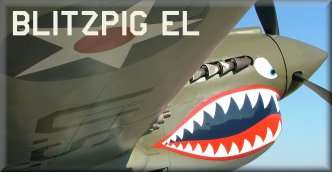Quote:
Originally Posted by Gollum

By they way, does anyone know what a "burnt intake" is? Is that refering to an intake valve? and why would it happen by itself without CE on or witout getting hit?
-Gollum
|
Engine management and damage are still in need of help, IMHO.
After 2 days of flying the sim now I find that CEM/Overheat and engine damage caused by it is odd to say the least. With no manual or info on proper engine management, dubious indications of the cockpit instruments, and engine reactions to inputs that frankly defy logic, I've got to believe that something is amiss here. Of course the "harder is more realistic just because" crowd are probably really digging it.
The only explanation I have is that the cockpit instruments are simply not accurate. NO matter how conservative I am with the engines on the Blenheim, I have yet to get a flight longer than 2 or 3 minutes after take off before losing the right engine, and it's
always the right engine that goes first. Makes no sense.
If you are going to bother to model engine systems and damage at this level, then you absolutely have to model accurate monitoring systems, proper sonic cues as to what the engines are doing, and provide explicit documentation on how to run them
in the sim. Real pilot's notes are meaningless in our context.
I don't mind the workload of operating these virtual aircraft at all, it's enjoyable to me. I have driven many automobiles that were made in the first couple of decades of the last century, and it is gratifying to operate them because they are so complex. Evry change of power set demands a change in fuel mix and ignition timing, barometric pressure, humidity, and temperature changes from day to day bring challenges merely to get them up the road. But, what you do to make them run is logical. What I'm seeing so far with CEM/Overheat on is not.




